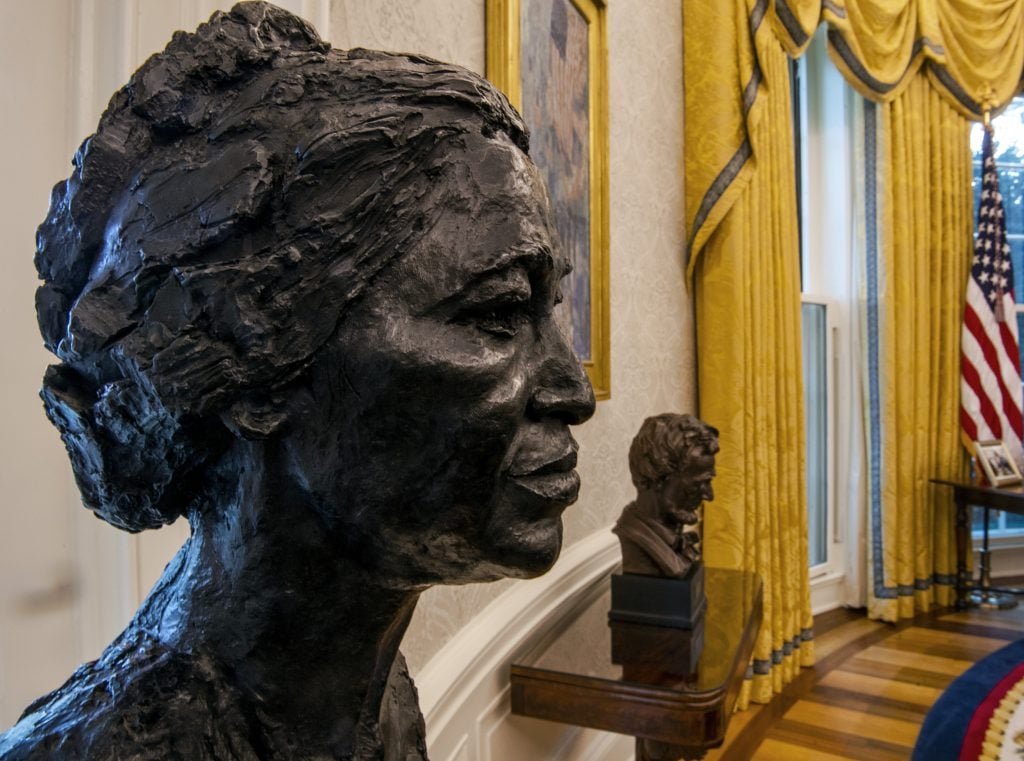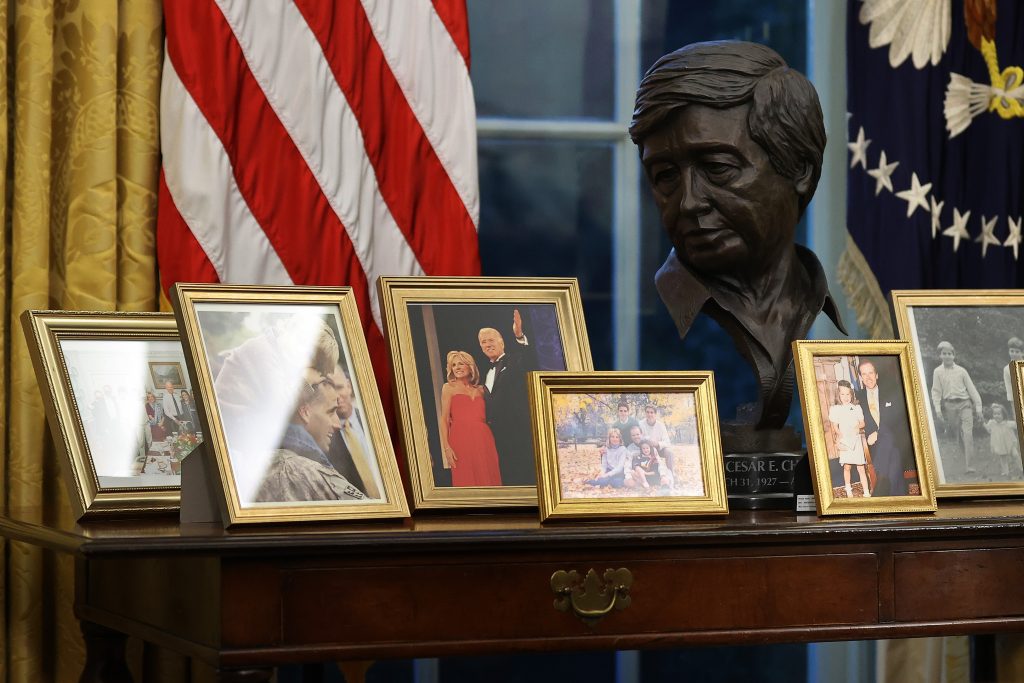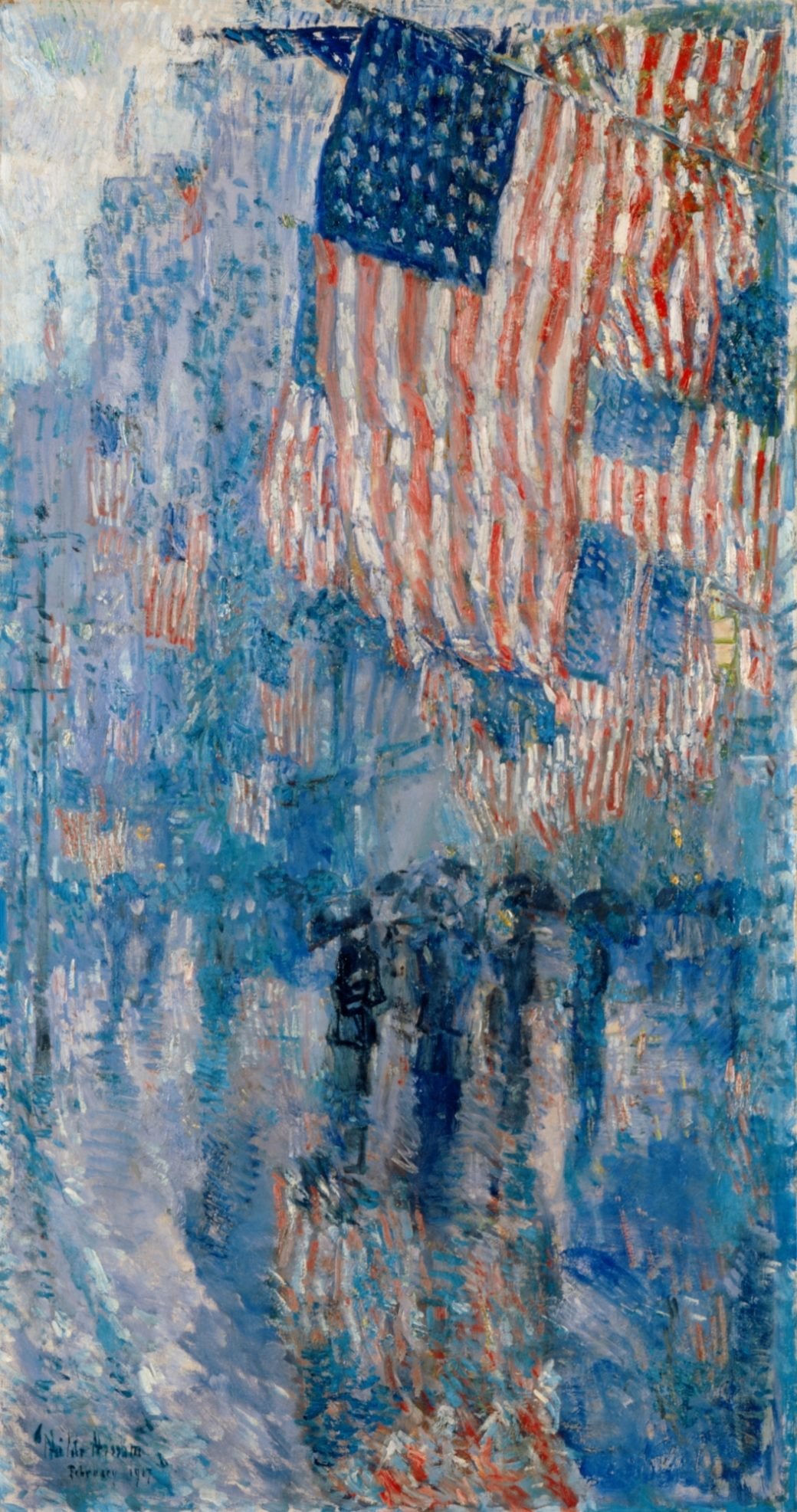Politics
We Decode the New Art Biden Just Installed in the Oval Office, From a Bust of Cesar Chavez to a Calming Childe Hassam Painting
The National Portrait Gallery has loaned two new sculptures to the Biden administration.

The National Portrait Gallery has loaned two new sculptures to the Biden administration.

Sarah Cascone

As Joe Biden took the oath of office as the 46th president of the United States yesterday, staffers were rushing to ready the Oval Office for its new occupant. They had only five frenzied hours to finish swapping out artworks and other furnishings before the arrival of the incoming commander-in-chief.
Now, art lovers and political wonks alike are reading heavily into the choices for clues about Biden’s priorities and mindset. The new additions serve to underscore the values of unity, equity, and openness that imbued Biden’s inaugural address.
So what’s new? First, Biden’s team swapped a portrait of Andrew Jackson—a populist president revered by Donald Trump—for one of Founding Father and inventor Benjamin Franklin, a switch that has been seen as symbolic of Biden’s reverence for science.
The Franklin painting, a 1785 canvas by Joseph Siffred Duplessis, was actually already on view in the Oval Office during Trump’s tenure, but is now in a more prominent position next to the Resolute Desk. The work is on loan from the Smithsonian’s National Portrait Gallery, along with a Martin Luther King Jr. bust by Charles Alston that has been at the White House since the year 2000 and is now on display on the mantlepiece.
andrew jackson has been replaced with ben franklin pic.twitter.com/nJaVzgnAqe
— Tim Dickinson (@7im) January 20, 2021
The museum has also provided two of the new additions to the office, loaning bronze busts of Robert Francis Kennedy—a Catholic, like Biden—and Civil Rights icon Rosa Parks. Robert Berks created the RFK sculpture in 1968, after the Democratic presidential candidate’s assassination, while the 1990 Parks piece is by Artis Lane.
“We traditionally loan works from the portrait gallery’s collection to the White House at the president’s request,” Dorothy Moss, the museum’s acting director of curatorial affairs, told Artnet News in an email. “While we can’t speak to why the president selected these works, I think his choice of figures such as Robert F. Kennedy and Rosa Parks reflect the commitment his administration has made to racial equity, nonviolent protest, and resilience in the face of adversity.”
Biden also added a Paul Suarez bust of the late Mexican American agricultural labor leader Cesar Chavez to the Oval Office, on view behind his desk amid an array of family photographs.
The prominent placement of the work, on loan from the Cesar Chavez National Monument in La Paz, California, was seen by some as a sign of the Biden administration’s attitude toward immigration. On his first day in office, Biden proposed legislation allowing undocumented farm workers to apply for green cards immediately.

President Joe Biden has added Paul Saurez’s bust of the late Mexican American agricultural labor leader Cesar Chavez to the Oval Office. Photo by Chip Somodevilla/Getty Images.
“We’re happy that the bust is there,” Chavez’s son, Paul Chavez, told CNN. “It represents the hopes and aspirations of an entire community that has been demonized and belittled, and we hope this is the beginning of a new day, a new dawn in which the contributions of all Americans can be cherished and valued.”
On the opposite wall, a portrait of Franklin D. Roosevelt—who also took power at a time of national crisis—is flanked by George Washington and Abraham Lincoln on one side, and Thomas Jefferson and Alexander Hamilton on the other.
Here's the new @POTUS Biden Oval Office via @washingtonpost – check out the painting of Benjamin Franklin by Joseph Duplessis, as well as the bust of Cesar Chavez behind the Resolute Desk. Opposite the desk – FDR, framed by 4 other American Presidents. pic.twitter.com/s7dMeFoYpw
— Derek Summerville (@D_Summerville) January 20, 2021
Biden’s pairing the well-known rivals is meant “as hallmarks of how differences of opinion, expressed within the guardrails of the Republic, are essential to democracy,” his office told the Washington Post.
Additional artworks on view include busts of Eleanor Roosevelt and Daniel Webster as well as a sculpture of a horse rider by Allan Houser of the Chiricahua Apache from the late Senator Daniel K. Inouye, the first Japanese American elected to both the House and the Senate. Childe Hassam’s Avenue in the Rain, from the White House collection, hangs to the left of the president’s desk.

Childe Hassam, Avenue in the Rain (1917). Courtesy of the White House.
The Smithsonian American Art Museum, which prominently loaned a painting by Robert S. Duncanson to the inauguration festivities, has also been approached by the new administration regarding potential art loans, but could not confirm specific objects as of press time.
Other new interior design choices for Biden include swapping a cushioned maroon chair for a brown leather one and bringing in a dark blue rug last used during Bill Clinton’s administration, according to the Independent.
The military flags that were behind the desk during the Trump era are gone, with only an American flag and one with a presidential seal in their place (although the gold drapes favored by both Trump and Clinton remain). Finally, a rock from the moon—a symbol of past American accomplishments—is now on display on one of the office shelves.